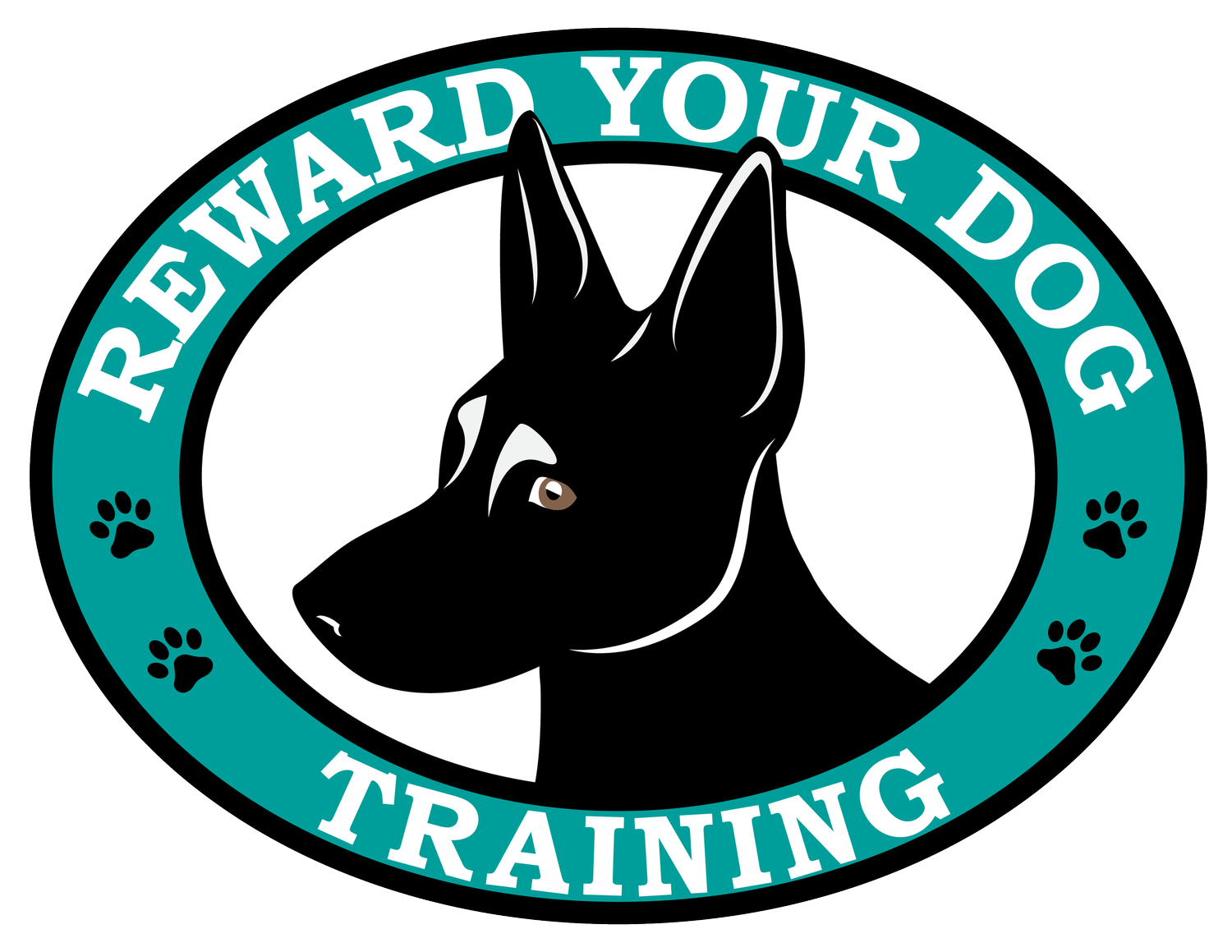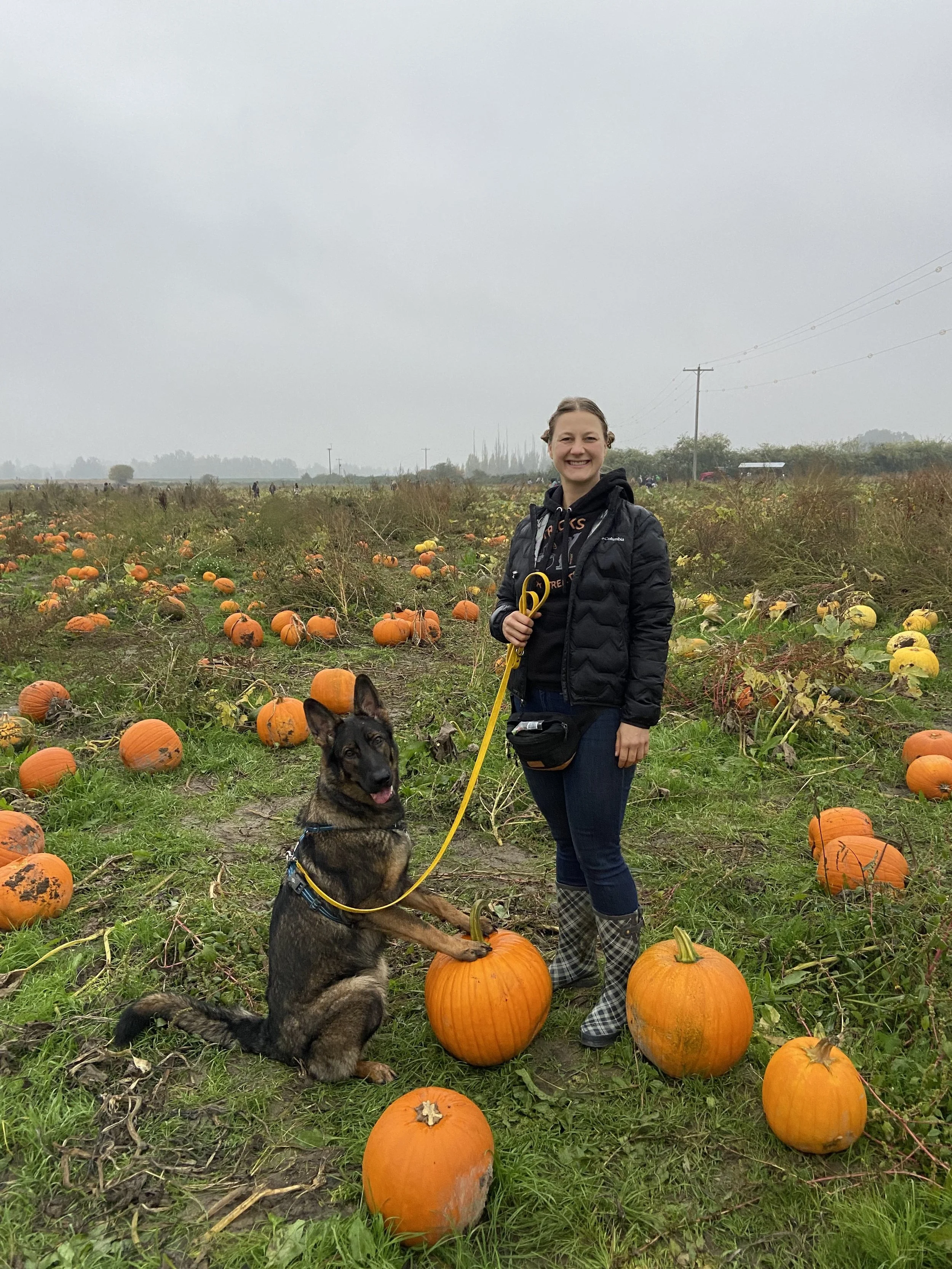Training Basics: What’s the Difference between Markers & Cues?
Yggie demonstrating her “paws” cue.
Training means learning a new language to speak with your dog, and as is the way with languages, that means learning new vocabulary - for both you and your dog. Let’s chat about two important concepts that can help you communicate with your dog better: markers and cues.
What is a marker, and how is it different from a cue?
Beginning training with your dog can be a bit confusing. Using food or toys sounds easy in principle, but then it can be tricky to understand how to teach your dog the skills you’re wanting to teach and how to tell them that they’re doing it right. However, once you develop a language around training to help you conceptualize how you and your dog can learn together, you can begin to see the system behind training - and that system can give you the power to progress your training more quickly and with less frustration to you and your dog. So - let’s take a look at the basic training concepts of “marker” and “cue” and what they mean.
Markers
I distinctly remember thinking about training - way back when I wasn’t a dog trainer, and wondering HOW IN THE WORLD I could let my dog know that I liked what he was doing at the exact moment it happened. It seemed like I was giving my dog treats, but they would always come a bit late, and I wasn’t sure if my pup was putting together that THIS behavior was getting him the treat.
This is exactly where markers come in. The purpose of a marker, also called a bridge signal, is to tell your dog “yes, good job, that’s the right thing”. Then, you can reach for the reward you’re giving your dog and hand it to them.
Markers work because they have been paired with food frequently, and the dog enjoys hearing the marker word - since it predicts something they want to get. That means, markers only have power once they have been paired with something desirable.
There are many different ways to approach markers. In general, the two big camps are using one marker versus using location specific markers.
Using a single marker
When you use a single marker, such as a click, the word “yes”, or any other sound, the marker predicts to your dog that you will give them food. However, the marker doesn’t tell your dog how the food will be delivered. They will hear the marker, orient towards you and then watch you to see how you will deliver the food to them. This approach is simple for you to use
Using a marker system
Marker systems are a bit more complicated. Using a marker system means you will have different markers for different forms of food delivery. For example, you might click or say “x” for the dog to come get the food from your hand, and you may say “toss” or “get it” for food that you throw on the floor. The downside of this approach is that it takes more thought and learning, and it can slow you down if you’re contemplating how to deliver food to your dog during training. The upside is that it can clarify things for your dog and increase motivation. Different markers often also become associated with different emotions, for example “toss” is accompanied by excited feelings while a marker like “scatter” (throwing a handful of food on the floor) is associated with sniffy, calm feelings.
Cues
Cues, which are called commands by more traditional dog trainers, are names for the behaviors you ask your dog to do. I personally prefer the term “cue” because it tells our dog that they can earn a reward by performing the behavior, but there is less of an “or else” connotation.
A cue is, for example, the word “sit”, “down”, or “go to bed”. While markers are associated with the reward, cues signal to the dog that a reward is available to them if they perform the behavior associated with the cue.
The Interplay between Cues and Markers
So - how do markers and cues work together? This is where things can get a bit confusing - because at the end of the day, a marker is a cue, name the cue to collect the reward.
But let’s keep it simple for now and stick to looking at behaviors that your dog already knows. The cue tells your dog “please do this”, and the marker tells your dog “thank you for doing this.” In short - cues are “please” and come before the behavior, and markers are “thank you” and come after the behavior.
You can see me play with my dog in this video to see the difference. My dog has both a general marker cue (a click from a clicker or a mouth cluck) as well as a whole marker system. You don’t need a complicated marker system, but it can have its benefits, and you may enjoy playing around with it.

